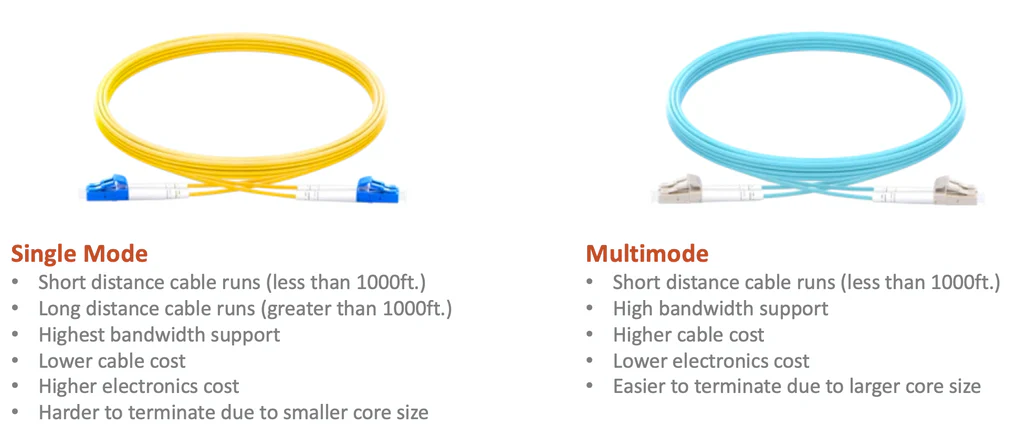Fiber optic cable is a critical component in modern communication networks, providing high-speed, reliable data transmission over long distances. There are two main types of fiber optic cable: single-mode and multi-mode. In this blog post, we will explore the differences between these two types of fiber optic cable and the applications for which they are best suited.
Single-mode fiber optic cable is made of a single, thin glass or plastic fiber and is designed for high-speed, long-distance data transmission. The thin fiber and the small core diameter of the cable allow only one mode of light to propagate, hence the name “single-mode”. The small core diameter and high bandwidth of single-mode fiber optic cable make it ideal for long-distance, high-speed data transmission, such as in telecommunications and data centers.

One of the key advantages of single-mode fiber optic cable is its ability to support high bandwidth and data transfer rates. With single-mode fiber optic cable, data can be transmitted over distances of up to 40 kilometers or more, with transfer rates of up to 100 Gbps. This makes it ideal for high-speed data centers, where large amounts of data need to be transmitted quickly and efficiently.
Another advantage of single-mode fiber optic cable is its lower attenuation compared to multi-mode fiber optic cable. This means that less signal is lost over long distances, making it possible to transmit data over longer distances without the need for intermediate signal boosters or repeaters. This results in a more cost-effective and efficient data transmission solution, particularly for long-distance networks.
Multi-mode fiber optic cable, on the other hand, is designed for shorter distance, lower speed data transmission. Multi-mode fiber optic cable has a larger core diameter and can support multiple modes of light propagation. This larger core diameter allows for higher bandwidth, but it also means that the signal degrades over longer distances, making it unsuitable for long-distance data transmission.
Multi-mode fiber optic cable is ideal for applications that require high bandwidth over short distances, such as in local area networks (LANs) and campus networks. The larger core diameter of multi-mode fiber optic cable makes it possible to transmit data over distances of up to several kilometers, with transfer rates of up to 10 Gbps. This makes it a cost-effective solution for high-speed data transmission in local area networks, where large amounts of data need to be transmitted quickly and efficiently.
In conclusion, single-mode and multi-mode fiber optic cable are both critical components in modern communication networks, each with its own unique advantages and limitations. Single-mode fiber optic cable is best suited for high-speed, long-distance data transmission, while multi-mode fiber optic cable is ideal for high-speed data transmission over short distances. When choosing between single-mode and multi-mode fiber optic cable, it is important to consider the specific requirements of your application, such as the distance over which data needs to be transmitted and the required data transfer rate.